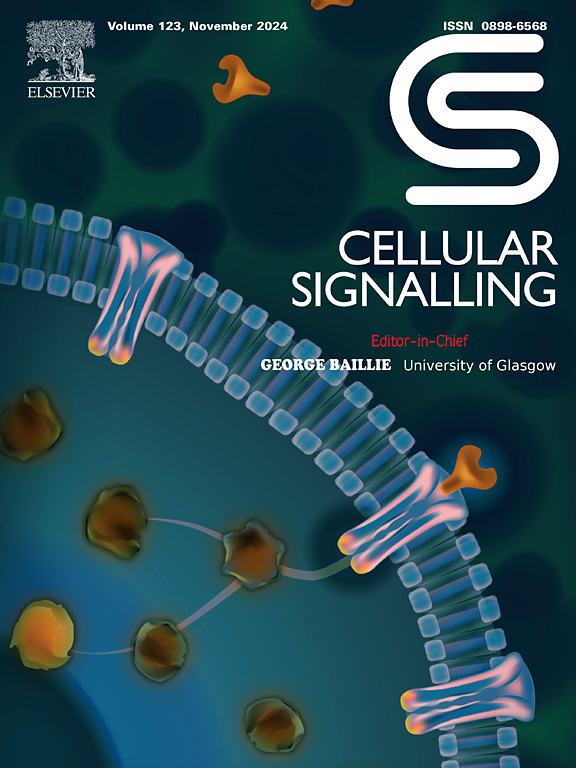破坏Hsp72的蛋白-蛋白相互作用网络可抑制脂肪细胞的成脂分化和脂质合成。
IF 4.4
2区 生物学
Q2 CELL BIOLOGY
引用次数: 0
摘要
热休克蛋白 Hsp72 在脂肪组织中对抗肥胖症的生物功能仍不清楚。我们的研究结果表明,在甘油三酯(TG)积累过程中,Hsp72在脂肪组织和3 T3-L1细胞中的表达水平都会升高。在 3 T3-L1 细胞中敲除 Hsp72 后,可观察到成脂基因表达和甘油三酯水平明显下降,这表明 Hsp72 促进了成脂分化和脂质合成过程。受到这些发现的鼓舞,我们进一步证实了异位Hsp72抑制剂YK5和MKT-077也对这两个过程有抑制作用。进一步的评估显示,Hsp72 在与许多新的代谢和细胞形态相关的客户蛋白相互作用中发挥着关键作用,从而介导了脂肪生成和脂质生成过程。Hsp72 抑制剂有可能破坏这些相互作用,导致脂肪生成和脂肪生成基因表达下调,并抑制 TG 的积累。这些研究结果表明,抑制Hsp72以破坏脂肪细胞的脂肪生成分化和脂质合成可能是一种很有前景的抗肥胖策略。本文章由计算机程序翻译,如有差异,请以英文原文为准。
Disrupting the protein-protein interaction network of Hsp72 inhibits adipogenic differentiation and lipid synthesis in adipocytes
The biological function against obesity of heat shock protein Hsp72 in adipose tissue has remained unclear. Our findings demonstrated that the expression levels of Hsp72 increased during the triglyceride (TG) accumulation process both in adipose tissue and 3T3-L1 cells. A significant decrease in adipogenic gene expression and TG levels was observed upon Hsp72 knockdown in 3T3-L1 cells, suggesting that Hsp72 promoted adipogenic differentiation and lipid synthesis processes. Encouraged by these findings, we further confirmed the allosteric Hsp72 inhibitors YK5 and MKT-077 also exhibited inhibition of both these processes. Further evaluation revealed that Hsp72 played a key role in interacting with numerous novel metabolic and cytomorphologic-related client proteins, thereby mediating the adipogenesis and lipogenesis process. Hsp72 inhibitors had the potential to disrupt these interactions, leading to the downregulation of adipogenic and lipogenic gene expression, as well as the suppression of TG accumulation. These findings suggested that inhibiting Hsp72 to disrupt adipogenic differentiation and lipid synthesis in adipocytes may be a promising anti-obesity strategy.
求助全文
通过发布文献求助,成功后即可免费获取论文全文。
去求助
来源期刊

Cellular signalling
生物-细胞生物学
CiteScore
8.40
自引率
0.00%
发文量
250
审稿时长
27 days
期刊介绍:
Cellular Signalling publishes original research describing fundamental and clinical findings on the mechanisms, actions and structural components of cellular signalling systems in vitro and in vivo.
Cellular Signalling aims at full length research papers defining signalling systems ranging from microorganisms to cells, tissues and higher organisms.
 求助内容:
求助内容: 应助结果提醒方式:
应助结果提醒方式:


